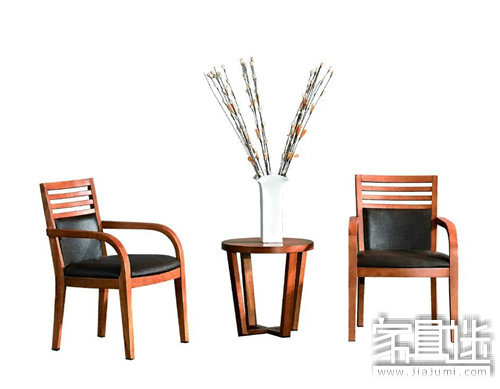The chair type is commonly referred to as an armchair, depending on its structural design. Armchairs typically feature additional support on the sides, making them more comfortable and suitable for relaxation.
Most chairs are designed for knock-down (KD) assembly, unless otherwise specified. The basic structure of an armchair and a regular chair is similar, but an armchair includes two additional armrests for enhanced comfort and support.
The chair is generally assembled using a seat back, seat cushion, front legs, and frame armrests, connected with screws, dowels, and tenons. This construction method ensures stability and durability while allowing for easy disassembly and transportation.

Seat Frame
1. The seat frame is located beneath the seat cushion and serves as the foundation that connects the cushion, front legs, and backrest together.
2. Typically, the seat frame consists of front and rear horizontal bars, along with left and right side frames, all connected using plates, rubber locks, and fast teeth to form a stable base.
3. The front and rear horizontal parts of the frame are usually made from solid wood. Depending on customer preferences, the lower ends can be shaped differently. Generally, the front horizontal and side bars curve outward, while the rear crossbar matches the curvature of the backrest.
4. The left and right horizontal sections of the frame often include three U-shaped grooves inside, which help in connecting the wood pieces and reinforcing the structure for added strength.
5. The connection between the horizontal and backrest parts of the frame is usually done with one piece of wood drilled at both ends to ensure a secure fit.
6. The rear part of the frame must be tightly connected to the left and right sides. Usually, the rear ends of the horizontal bars align perfectly with the rear of the frame.
7. When assembling the front part of the seat frame with the left and right sides, a mold is used to ensure consistency in the placement of the clips and proper alignment with the front leg group.
8. For armchairs, the frame is usually equipped with through-holes at the bottom of the armrests. These holes are generally 2–3 mm larger than the screw diameter to allow for smooth installation.
9. After the entire seat frame is assembled, the top surface should be flat and smooth. If needed, it can be sanded using a sanding machine to achieve a professional finish.
10. The through-holes around the frame for connecting the front and rear legs should be drilled after the entire frame is assembled to avoid misalignment or errors in positioning.
11. The connecting wood pieces are placed at the four corners of the frame, linking the front, back, left, and right sides, as well as connecting to the front and rear legs.
12. The connecting wood is typically made from hard, solid wood, and minor imperfections are generally acceptable.
13. The connecting wood is usually divided into front and rear sections, and the angle at each end must match the overall angle of the seat frame. The ends of the connecting wood should fit precisely into the corresponding U-shaped grooves.
14. The wooden lock used to connect the seat cushion plate is typically an 8#×1 fast tooth, and the depth of the countersink must be carefully controlled to ensure a flush and secure fit.
Related reading: What are the production process standards for the back of the chair?
Armrests (for chairs with armrests only)
1. The armrests are positioned at the top of the seat cushion and are located on both the left and right sides of the chair.
2. They are usually attached to the side of the rear leg and the frame using screws. The screw holes on the rear leg are typically deep to ensure a strong connection.
3. Armrests may vary in design based on specific requirements, and their structure must undergo testing to ensure safety and functionality.
4. The entire armrest should be smooth and free of rough edges to provide a comfortable and pleasant user experience.
1, kraft paper food containers can effectively protect food. It has good moisture resistance and can prevent food from being spoilt by moisture. At the same time, kraft paper has good permeability, which can maintain the freshness and taste of food.
2. Brown paper container is a degradable material, friendly to the environment. Compared with plastic containers, kraft paper containers are easier to decompose in the natural environment and will not pollute the soil and water. Moreover, kraft paper is a renewable resource that can be continuously produced through plant regeneration.
3, kraft containers also have good heat resistance. It can withstand high temperatures and is suitable for the packaging of hot food, such as hot soup, hot pasta and so on. This makes kraft paper containers widely used in the fast food and take-out industries.
Kraft paper food containers are an excellent packaging option. It can protect the quality and taste of food, and reduce the negative impact on the environment. In the pursuit of sustainable development today, the use of kraft paper food containers can contribute to the food industry and promote the popularity of environmental protection awareness.
Kraft Paper Bowl,Paper Kraft Bowl,Kraft Bowls ,Paper Bowl Kraft
EVER GREEN(ZHEJIANG)NEW MATERIAL CO., LTD / KUNSHAN GREENPACK CO.,LTD , https://www.changjingpack.com